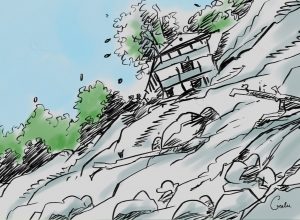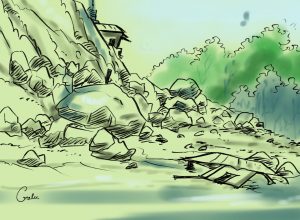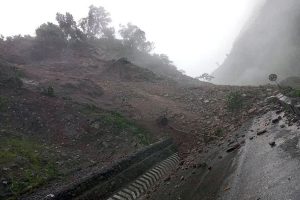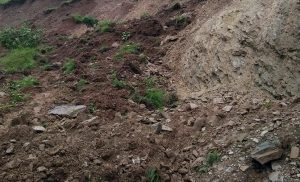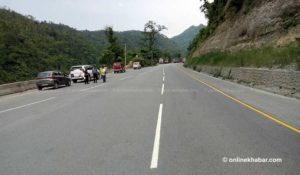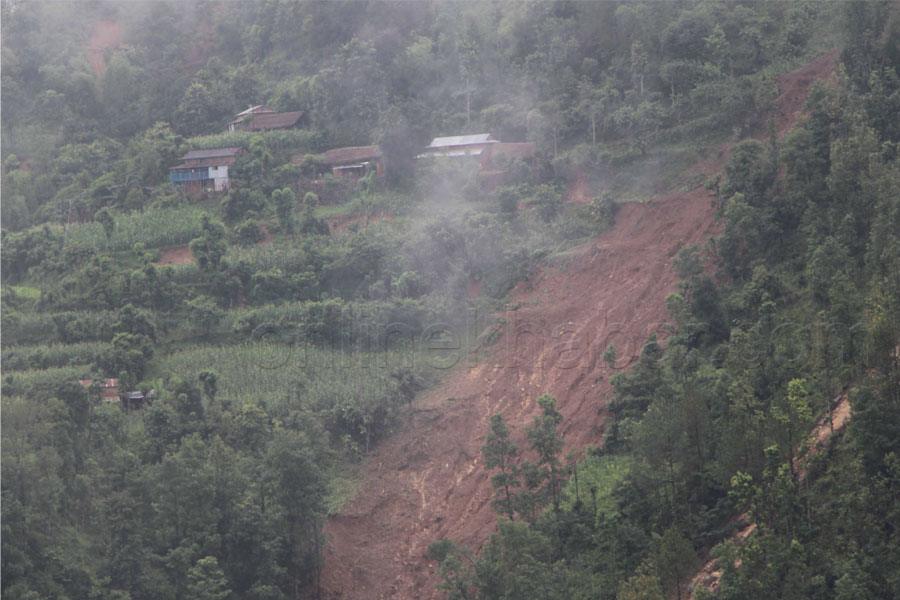
According to government data, there were 3,246 landslide events between 1971 and 2016 in Nepal. Thousands of people lost their lives and many roads and bridges were damaged. In 2014, a major landslide occurred in a densely populated area (Jure of Sindhupalchok), around 80 km northeast of Kathmandu. With 156 human casualties, it was one of the deadliest landslides in Nepal’s history. A case study was carried out on this deadliest landslide, and the report shows the loss of soil or land was experienced by many respondents (79%) and it led to the most severe losses and damages in monetary terms. The average cost amounted to more than $26,000 per affected household. The Baisari landslide in Myagdi, triggered by the Gorkha earthquake, was also one of the deadliest landslides in Nepal and its total loss was calculated at Rs 42 million. This year alone, by July 15, 116 fatalities, 50 disappearances, and 138 injured cases have been reported in landslides across Nepal.
Civil engineering is all about construction, transportation, and development. While constructing roads for transportation, it is mandatory to have access by blasting or excavation. If there is no geological fault, and the slope is stable, the construction work will be sustainable for decades. Engineers must study aspects like slope, geological fault, hydrology, and slope saturation. This study should be done to assure safety during and after civil construction works.
Mainly, we can face a landslide while or after the construction of different civil structures in the hilly and Himalayan regions. If the construction is done in the faulty zone, the construction site is more vulnerable to landslides. For example, sometimes, while fixing and constructing a road alignment, a road passes some of these large-scale palaeo-landslides. The road sections are critical in that road alignment but more vulnerable in the southern slope of the Himalaya. If possible, the alignment has to be changed, but sometimes it needs to be constructed in the unstable slope by following some engineering measures. While blasting in the hilly and Himalayan regions, and while doing construction works in the unstable zone, we may encounter landslides in the future.

Road construction in the hilly region is always a difficult task because of having clayey soil and steep topography. Also, it is difficult to construct a road across the Himalaya region, because of fragile and rugged topography. Unfortunately, our country’s topography forced us to resort to the construction of different highways in both topographies. When highways are constructed, people who used to live in the valleys and the Himalayas start living along those roads. However, people have forgotten the influence of mass movement that occurred in the past in places like Siddhababa, Krishnabhir, and Sindhupalchok, etc. The road from Beni to Larjung of Kaligandaki also has a critical slope and susceptible to landslide occurrence.
The major problem identified is the lack of physical information about soil characteristics, water table, pore-water pressure. This information is crucial for planning early warning systems in vulnerable areas. The lack of monitoring is also a greater problem. There is no monitoring system in the country. Moreover, the government body for monitoring is not quite effective. Many gabion walls were constructed earlier, and they are getting weaker nowadays and easily get destroyed by the moving mass in the monsoon. Instead, we must have a good practice of slope modification and construction of retaining walls with bio-engineering.
Landslide susceptibility assessments have been carried out in Nepal, using direct geomorphological mapping, heuristic, and statistical approaches. Some researchers have used various methods to quantify the hazards in terms of safety. Studies have also been carried out to determine the influence of the construction of a new and extensive network of rural roads that are being connected to the national highways, and are found to be at an even greater risk of landslides.
 Landslide remedial measures are arranged in four practice groups, namely: drainage, retaining structures, modification of slope geometry, and internal slope reinforcement. For a reliable design of the remedial measures, an effective tool is ‘back analysis’ of failed slopes, while advanced numerical methods are nowadays frequently used to design safe and cost-effective landslide remedial measures. The selection of an appropriate remedial measure depends on engineering feasibility, economic feasibility, legal/regulatory conformity, social acceptability, and environmental acceptability.
Landslide remedial measures are arranged in four practice groups, namely: drainage, retaining structures, modification of slope geometry, and internal slope reinforcement. For a reliable design of the remedial measures, an effective tool is ‘back analysis’ of failed slopes, while advanced numerical methods are nowadays frequently used to design safe and cost-effective landslide remedial measures. The selection of an appropriate remedial measure depends on engineering feasibility, economic feasibility, legal/regulatory conformity, social acceptability, and environmental acceptability.
Civil engineers and geotechnical engineers carry out different analyses for the prediction—vulnerable area detection—and detection of a landslide with the help of remote sensing. Recognition of potential landslide areas can have a positive impact on landslide management. Slope stability analysis is carried out to know the stability of the slopes. Clearing the current landslides and preventing the pending landslides are the works that engineers should focus on. Technically, preventing the landslide means the addition of resisting forces and removal of the driving forces.
Researches also propose installing a monitoring system in the areas and getting detailed information on geo-hazards in the area to overcome future risk. As done in the Niigata prefecture of Japan, survey stations should be established for accurate determination of ground surface. A proper warning system can be created by establishing those survey stations. At active or exposed areas, plantation of appropriate species should be done as they grow in a rocky base.
In the steeper areas, civil constructions are quite complex. So, bioengineering is also preferred in some cases. Moreover, the dead load of civil construction will not be added if bioengineering is chosen. Some other solutions can be geogrid (two-dimensional polymer material for erosion control that ensures supplement soil stress), expansive anchor bolt, check dam, netting, wattle fence, gabion check dam, and so on.
Dhakal is a civil engineering student at Kathmandu University.




